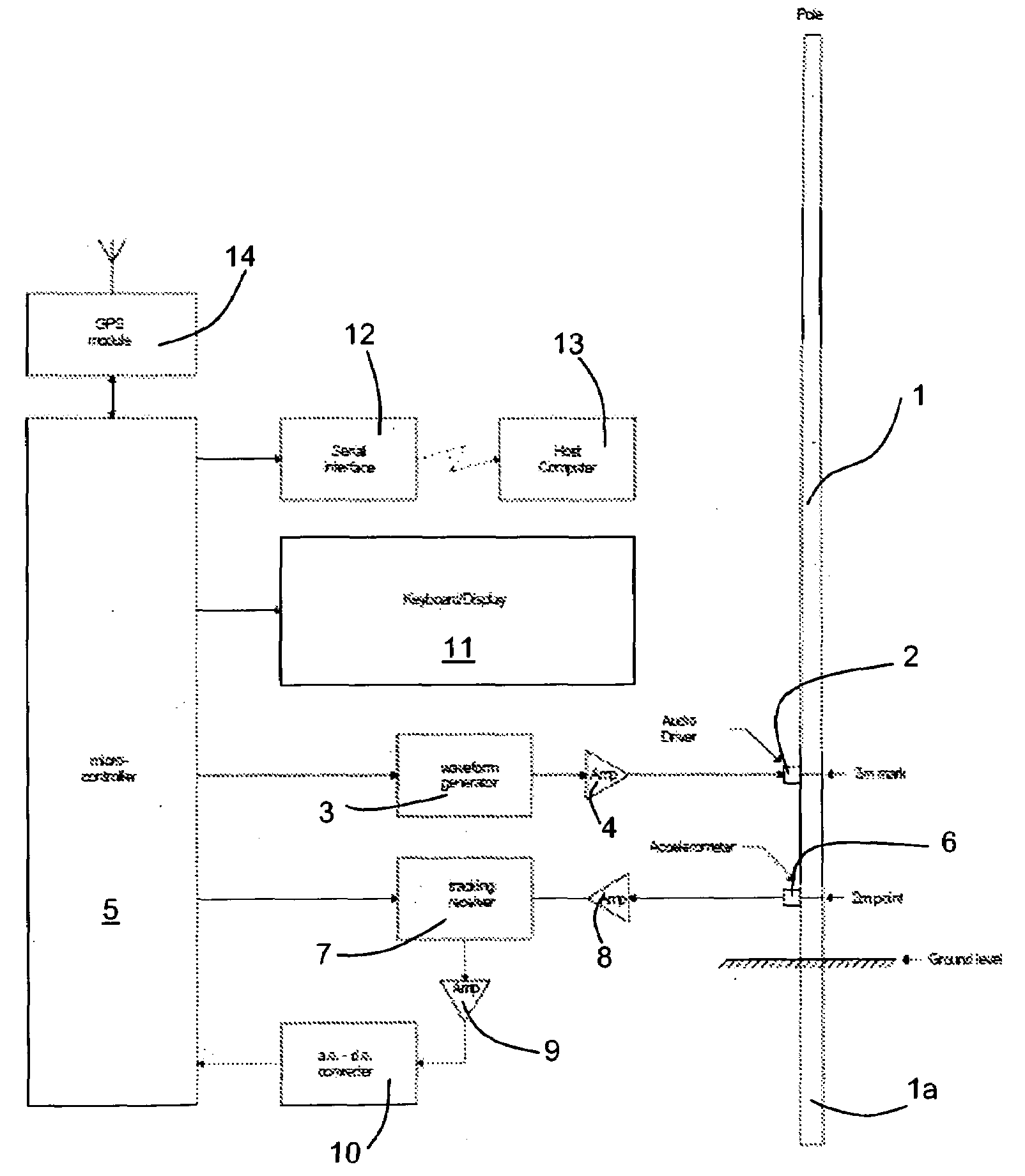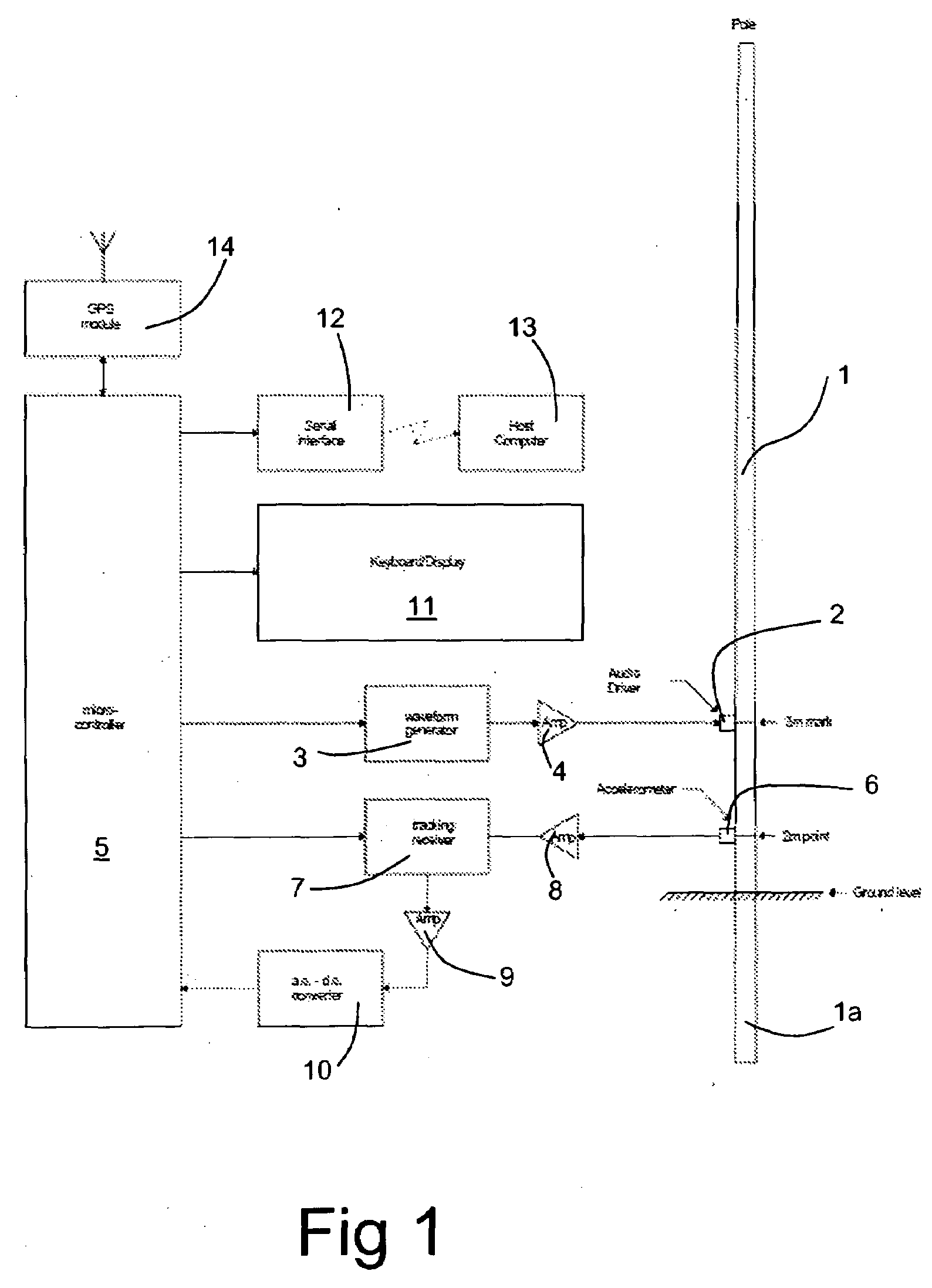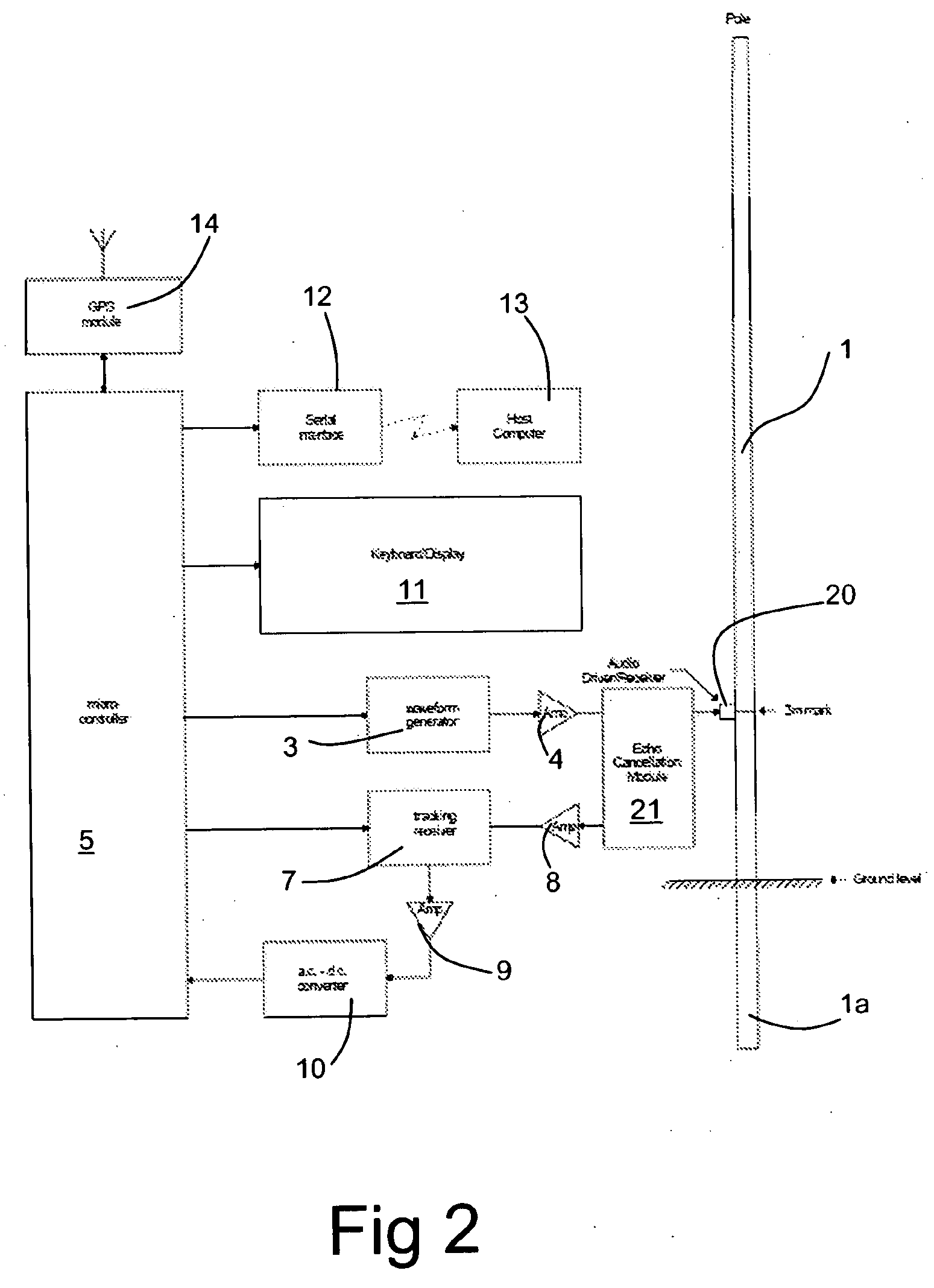Method of and apparatus for testing wooden poles
a technology for wooden poles and testing methods, applied in the direction of weighing apparatus, analysing solids using ultrasonic/ultrasonic/infrasonic waves, and processing detected response signals, etc., can solve the problems of pole replacement, increased cost and possible delay, and reducing the safe working life of the pol
- Summary
- Abstract
- Description
- Claims
- Application Information
AI Technical Summary
Benefits of technology
Problems solved by technology
Method used
Image
Examples
Embodiment Construction
[0038]Referring first to FIG. 1, a utility pole 1 has one end thereof 1a buried in the ground. If decay occurs in the buried end 1a, the pole may become inadequately supported and could fail when abnormally loaded, for example by a maintenance engineer climbing a ladder placed against it. The test apparatus consists of a transmit transducer 2 in the form of a magnetostrictive actuator which is temporarily clamped against the surface of the pole, for example at the 3 metre mark relative to the lowermost end, by means of a removable strap, for example. The driving signal for the transducer 2 is supplied by a waveform generator 3 by way of an amplifier 4. The waveform generator is controlled by a microcontroller 5.
[0039]A receive transducer 6, for example an accelerometer, is similarly temporarily clamped to the external surface of the pole 1 at a distance from the transmit transducer 2. For example, it can be mounted at the 2 metre position from the end of the pole. The output from th...
PUM
| Property | Measurement | Unit |
|---|---|---|
| frequency | aaaaa | aaaaa |
| frequencies | aaaaa | aaaaa |
| length | aaaaa | aaaaa |
Abstract
Description
Claims
Application Information
 Login to View More
Login to View More - R&D
- Intellectual Property
- Life Sciences
- Materials
- Tech Scout
- Unparalleled Data Quality
- Higher Quality Content
- 60% Fewer Hallucinations
Browse by: Latest US Patents, China's latest patents, Technical Efficacy Thesaurus, Application Domain, Technology Topic, Popular Technical Reports.
© 2025 PatSnap. All rights reserved.Legal|Privacy policy|Modern Slavery Act Transparency Statement|Sitemap|About US| Contact US: help@patsnap.com



